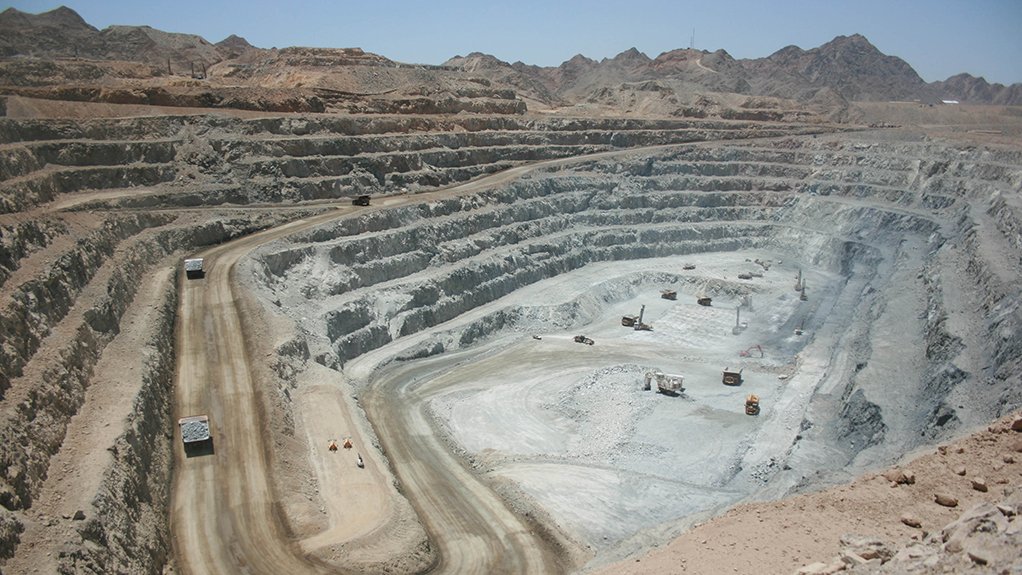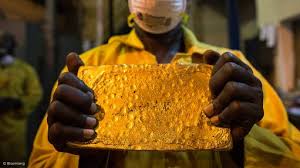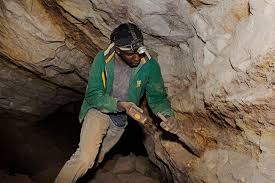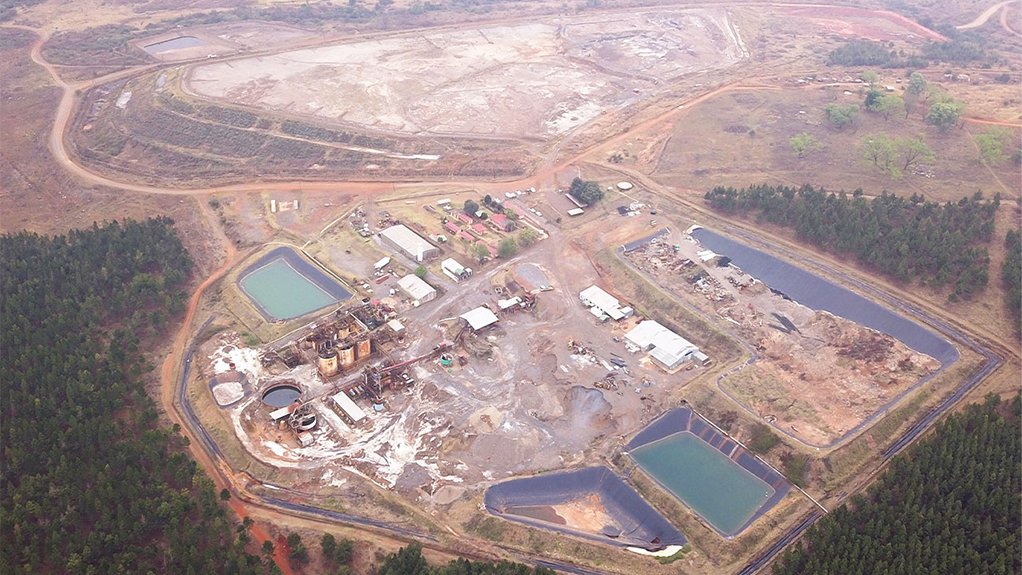Precious Metals

Platinum Tariffs Offset by Transnet-UMK Deal Reshaping Mining Logistics

Platinum Tariffs Offset by Strong Investment as Transnet-UMK Deal Reshapes Mining Logistics
The mining sector is witnessing significant developments across multiple fronts, from robust platinum market performance despite tariff headwinds to groundbreaking logistics agreements that promise to transform South Africa's mineral export capabilities. These developments are creating ripple effects throughout the industry, influencing everything from investor sentiment to operational economics.
What Are the Latest Developments in Platinum Tariffs?
Despite concerns about trade restrictions dampening platinum markets, several countervailing forces have emerged to maintain market stability and confidence. The resilience demonstrated by platinum prices reflects underlying strength in fundamental demand drivers that continue to support the sector.
Strong Investment and Jewelry Demand Offsetting Tariff Impacts
Investment demand has surged significantly in 2025, with physical platinum-backed ETFs reporting substantial inflows during the first half of the year. This investment momentum has effectively counterbalanced the potential negative effects of tariffs impact on investments imposed on platinum markets.
"The remarkable strength of investment demand signals growing confidence in platinum's long-term fundamentals," notes industry analyst Rebecca Thomson of Metals Focus. "Investors are looking beyond short-term tariff issues to focus on platinum's critical role in industrial applications and the energy transition."
This investment surge comes despite tariff implementation that initially raised concerns about market disruption. However, the diversified demand base for platinum has proven to be a significant stabilizing factor, with investors apparently viewing current price levels as attractive entry points for long-term holdings.
Global Jewelry Market Providing Additional Support
The jewelry sector has emerged as another crucial demand driver, particularly in Asian markets where platinum jewelry sales have increased by approximately 15% year-over-year. This growth has further helped to mitigate concerns about tariff-related market disruptions.
China continues to lead this jewelry demand growth, with retailers reporting strong consumer interest in platinum pieces, especially in the bridal and luxury segments. Japanese and Indian markets have also shown notable growth trajectories, contributing to the overall positive demand picture.
"Asian consumers, particularly in China, continue to demonstrate strong affinity for platinum jewelry, with many viewing it as both a fashion statement and a store of value during uncertain economic times," explains Zhang Wei, Regional Director at the Platinum Guild International.
This jewelry demand strength appears to be structural rather than cyclical, reflecting changing consumer preferences and platinum's increasing cultural cachet in key Asian markets.
Price Performance Amid Tariff Environment
Platinum prices have maintained relative stability despite the challenging tariff landscape, with spot prices hovering around $1,430 per ounce as of mid-July 2025. This resilience demonstrates the metal's fundamental strength in the face of trade headwinds.
The price performance is particularly noteworthy given that analysts had projected potential declines of 8-12% following tariff implementation. Instead, the market has absorbed the news and found support from multiple demand sources, suggesting underlying strength that could position platinum for further gains as the tariff situation evolves.
What Does the Transnet-UMK Deal Mean for Mining Logistics?
The recently announced agreement between South Africa's transport utility and a major manganese producer represents a potential paradigm shift for mining logistics in the region, addressing one of the most persistent challenges facing the country's mineral export sector.
Key Elements of the 10-Year Contract Agreement
Transnet and United Manganese of Kalahari (UMK) have finalized a significant 10-year contract that represents a major development for South Africa's mining logistics sector. This long-term agreement provides crucial stability for both parties during a period when reliable infrastructure access has been challenging.
The deal includes guaranteed rail capacity allocations for UMK's manganese exports from the Northern Cape to export terminals, resolving a long-standing uncertainty that had previously complicated investment and operational planning. This certainty enables UMK to optimize production schedules and confidently pursue expansion opportunities.
Transnet's commitment to this decade-long arrangement also signals a shift in its approach to partnerships with mining companies, emphasizing collaborative, long-term solutions rather than short-term flexibility.
Strategic Importance for Manganese Export Channels
The deal secures dedicated capacity for UMK's manganese exports, addressing one of the most persistent bottlenecks in South Africa's mineral export system. This arrangement is particularly significant given the historical constraints in the manganese export corridor.
South Africa holds approximately 80% of the world's known manganese reserves, but logistical constraints have limited the country's ability to fully capitalize on this resource advantage. The dedicated capacity arrangement could allow for more consistent export volumes, potentially strengthening South Africa's position in global manganese markets.
The agreement also comes at a critical time, as global demand for manganese – essential for steel production and increasingly important in battery technologies – continues to grow amidst supply constraints from other producing regions.
Implications for Other Mining Operations
The successful negotiation between Transnet and UMK potentially establishes a template for similar agreements with other mining companies. Industry analysts suggest this could signal a new approach to resolving the longstanding logistics challenges that have hampered the sector's growth potential.
"This deal potentially creates a roadmap for resolving the infrastructure bottlenecks that have constrained South Africa's mining sector for years," explains mining economist Dr. Nomvula Nkosi. "If similar arrangements can be secured for other commodities, we could see a significant boost to export volumes and investor confidence."
Companies mining other bulk commodities, particularly iron ore and coal, are reportedly watching the implementation of this agreement closely, with several already engaged in preliminary discussions with Transnet about comparable arrangements.
How Is the Waterberg PGM Project Advancing?
The Waterberg platinum group metals (PGM) project represents one of the most significant new mining developments in South Africa, with potential to substantially impact both national production volumes and regional economic development.
Current Development Status and Timeline
The Waterberg platinum group metals (PGM) project is making substantial progress toward becoming a major new production center. Recent engineering and development work has positioned the project for significant advancement, with key milestones expected to be reached by early 2026.
The project's development timeline anticipates a phased approach to production, with initial operations commencing in 2026 and full production capacity expected by 2028. This gradual ramp-up strategy allows for optimization of processes and mitigation of operational risks.
Site preparation work is already underway, with initial infrastructure development progressing according to schedule. The project team has completed detailed geological modeling and mine planning, establishing a solid foundation for efficient extraction once production begins.
Technical and Operational Innovations
The project is implementing several cutting-edge technologies designed to optimize extraction efficiency and minimize environmental impact. These innovations reflect the ongoing mining industry evolution and could set new standards for the sector.
Among the most notable technological innovations is the implementation of a fully digitized mining operation, incorporating real-time monitoring systems, automated equipment, and AI-driven optimization tools. These technologies are expected to enhance both operational efficiency and worker safety.
The processing facilities will utilize advanced flotation technology that promises to increase metal recovery rates while reducing energy and water consumption. This approach aligns with growing industry emphasis on sustainability alongside productivity.
"Waterberg represents the next generation of PGM mining," states mining technology consultant James Mokoena. "The integration of digital technologies and automation from day one creates opportunities for efficiency that simply aren't available when retrofitting existing operations."
Economic Impact Projections
When fully operational, the Waterberg project is expected to create approximately 3,500 direct jobs and contribute significantly to regional economic development. The project's scale positions it as a potentially transformative force in South Africa's platinum sector.
Beyond direct employment, the project is expected to generate thousands of additional indirect jobs throughout the supply chain and local service economy. Community development agreements include provisions for skills development programs designed to maximize local employment opportunities.
The project's location in Limpopo Province, an area with limited industrial development, amplifies its potential economic impact. Local government officials have emphasized the project's role in regional development planning and diversification efforts.
What Are the Broader Market Implications of These Developments?
The combination of resilient platinum tariffs and improved mining logistics infrastructure creates several significant implications for South Africa's mining sector and global mineral markets.
Supply Chain Resilience in the PGM Sector
The combination of strong platinum demand and improved logistics infrastructure suggests enhanced supply chain resilience for South Africa's PGM sector. This development comes at a critical time as global markets increasingly prioritize secure access to critical minerals.
The stability provided by long-term logistics agreements like the Transnet-UMK deal creates a more predictable operating environment for producers, potentially reducing supply disruptions that have periodically affected PGM markets in recent years.
This enhanced resilience is particularly significant given South Africa's dominant position in global PGM supply, especially for metals like rhodium and ruthenium that have limited production sources worldwide.
Investment Sentiment and Market Confidence
The positive developments in both platinum market demand and infrastructure agreements have contributed to improved investor sentiment toward South African mining assets. Market analysts note that these factors could help attract much-needed capital to the sector, creating new investment opportunities 2025.
"We're seeing renewed interest from both strategic and financial investors who had previously adopted a wait-and-see approach to South African mining," explains investment analyst Priya Sharma. "The combination of strong metal prices and logistics solutions addresses two of the most significant concerns that have held back investment."
This improved sentiment is reflected in share price performance for listed South African mining companies, with PGM producers showing particularly strong gains in recent months.
Competitive Positioning in Global Markets
South Africa's position as a leading PGM producer stands to be strengthened by these developments, potentially enhancing its competitive standing relative to other major producing regions such as Russia and North America.
With reliable logistics infrastructure supporting consistent export volumes and new projects like Waterberg adding production capacity, South Africa could increase its market share in global PGM supply. This comes at a time when geopolitical factors have raised concerns about Russian PGM availability, potentially creating opportunities for South African producers to secure long-term supply agreements with industrial consumers.
The country's vast resource base, combined with improving operational efficiencies, positions South African producers favorably on the global cost curve, enhancing competitiveness even during periods of price volatility.
How Are These Developments Affecting Regional Mining Economics?
The logistics improvements and new project developments are creating significant positive impacts on the economics of mining operations throughout South Africa, with implications for investment decisions and project viability.
Cost Structure Improvements Through Logistics Efficiency
The Transnet-UMK agreement demonstrates how improved logistics arrangements can positively impact mining economics. Reliable rail transport typically reduces costs by 15-20% compared to alternative transport methods, significantly enhancing project viability.
This cost advantage is particularly critical for bulk commodities like manganese, where transport represents a substantial portion of total delivered costs. The predictability of rail access also eliminates the need for costly buffer inventories that have traditionally been maintained to mitigate logistics uncertainties.
For marginal operations, these logistics-driven cost reductions can mean the difference between viability and closure, potentially extending mine life and preserving employment in mining-dependent communities.
Production Scale Economics at Waterberg
The Waterberg project's large-scale approach is expected to deliver substantial economies of scale, with projected production costs potentially positioning it in the lower half of the global cost curve for PGM production.
The project's design incorporates a highly mechanized mining approach that maximizes labor productivity while maintaining safety standards. This approach, combined with the favorable geology of the deposit, creates a compelling cost structure that should provide resilience even during periods of lower metal prices.
The project's integrated approach to power generation and water management further enhances its economic profile, reducing exposure to two critical cost factors that have challenged other South African mining operations.
Value Chain Integration Opportunities
These developments create new opportunities for vertical integration within South Africa's mining value chain, potentially supporting South Africa beneficiation initiatives that have been a priority for policymakers.
The combination of reliable mineral supply and improved logistics creates favorable conditions for downstream processing facilities that convert raw minerals into higher-value products. Several feasibility studies are reportedly underway for PGM beneficiation projects that would produce catalytic converters, fuel cell components, and specialized chemical compounds.
Such integration would not only capture additional value within the South African economy but also create more sophisticated employment opportunities and technology transfer.
What Environmental and Sustainability Factors Are at Play?
Both the Transnet-UMK agreement and the Waterberg project incorporate significant sustainability elements, reflecting the mining industry's increasing focus on environmental and social responsibility.
Emissions Reduction Initiatives in Transport
The Transnet agreement includes provisions for gradual transition to more energy-efficient transport solutions, aligning with broader industry efforts to reduce carbon footprints across the mining value chain.
Rail transport already offers substantial emissions advantages over road haulage, with typically 75% lower carbon emissions per ton-kilometer. The agreement's provisions for further efficiency improvements, including potential electrification of key rail corridors, could further enhance this environmental benefit.
This approach aligns with the mining industry's increasing focus on Scope 3 emissions – those occurring in the value chain rather than direct operations – as investors and customers increasingly scrutinize comprehensive environmental performance.
Water Management Innovations at Waterberg
The Waterberg project has incorporated advanced water conservation technologies, addressing one of the most critical sustainability challenges facing mining operations in water-scarce regions.
The project's design includes a closed-loop water system that minimizes fresh water consumption through extensive recycling and treatment. Sophisticated monitoring systems will track water quality throughout the process, ensuring compliance with environmental standards while maximizing reuse.
These water management approaches are particularly significant given the project's location in a region where water scarcity has historically constrained development and created competition between agricultural, municipal, and industrial users.
Community Engagement and Social License
Both the Transnet-UMK agreement and the Waterberg project have emphasized robust community engagement frameworks, recognizing the growing importance of social license to operate in the mining sector.
The Waterberg project has implemented a comprehensive stakeholder engagement process that began during early exploration and has continued through development planning. This approach has allowed community concerns to be incorporated into project design, creating a more sustainable operational framework.
Similarly, the logistics agreement includes considerations for communities along transport corridors, with provisions for safety measures at rail crossings and noise mitigation in populated areas.
The mining industry is also increasingly focusing on renewable energy in mining operations, with companies like UMK exploring solar installations to power processing facilities. According to a recent Mining Weekly report, these renewable initiatives are becoming standard features in new mining developments across South Africa.
How do platinum tariffs affect global supply chains?
Platinum tariffs primarily impact the economics of cross-border trade but have less effect on overall supply availability. The current market has demonstrated that strong fundamental demand can offset tariff-related price pressures, maintaining market stability. While tariffs can alter trade flows between specific countries, the global nature of platinum demand and the metal's irreplaceable role in many applications limit the disruption caused by such measures.
What makes the Transnet-UMK deal significant for South African mining?
The 10-year agreement provides critical certainty for both the mining company and the logistics provider, addressing one of the most persistent challenges facing South Africa's mineral export sector. This type of long-term contract creates a foundation for sustainable operations and investment planning. The significance extends beyond this single deal, as it establishes a potential template for resolving logistics constraints that have limited the sector's growth potential for decades.
When is the Waterberg PGM project expected to reach full production?
Based on current development timelines, the Waterberg project is projected to achieve full production capacity by 2028, following a phased ramp-up period beginning in 2026. This timeline remains subject to final investment decisions and regulatory approvals. The gradual approach to full production allows for optimization of operational parameters and training of the workforce, potentially reducing the risks associated with large-scale project commissioning.
How do logistics improvements affect mining project economics?
Reliable logistics infrastructure typically reduces overall operating costs by 15-20% compared to alternative transport arrangements. This improvement can transform marginally economic projects into highly profitable operations, particularly for bulk commodities like manganese. Beyond direct cost savings, predictable logistics enable more efficient production scheduling, inventory management, and customer delivery commitments, all of which enhance project economics and investor confidence.
What role does platinum play in the energy transition?
Platinum and other PGMs are essential catalysts in hydrogen fuel cells and certain electrolysis technologies, positioning them as critical materials for the clean energy transition. This application represents a growing demand segment that complements traditional automotive catalyst uses. As hydrogen technologies gain momentum in both transport and stationary power applications, platinum demand from this sector is projected to grow significantly, potentially offsetting any reductions from internal combustion engine catalysts as electric vehicle adoption increases.
Curious About Transformative Mineral Discoveries?
Explore how Discovery Alert's proprietary Discovery IQ model provides real-time alerts on major mineral discoveries, offering pivotal insights for both short-term trades and long-term investment strategies. Discover the power of historic mineral finds by visiting the Discovery Alert discoveries page and begin your 30-day free trial to secure your market edge today.












